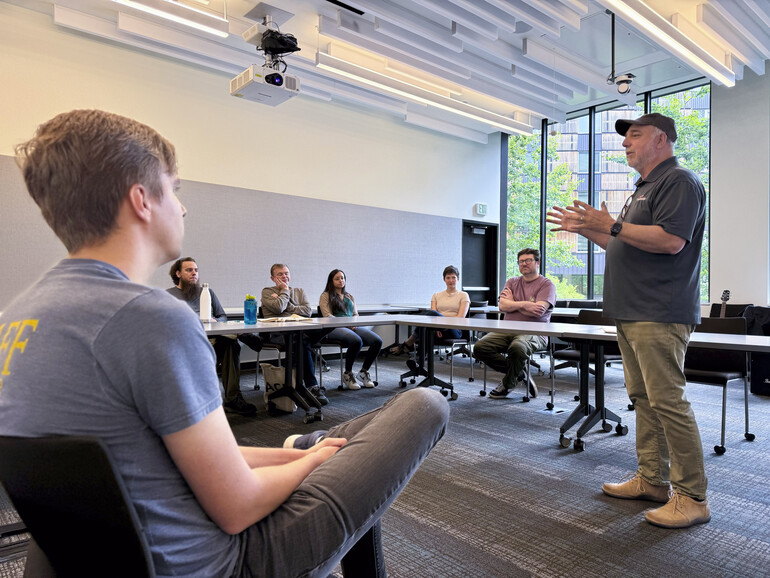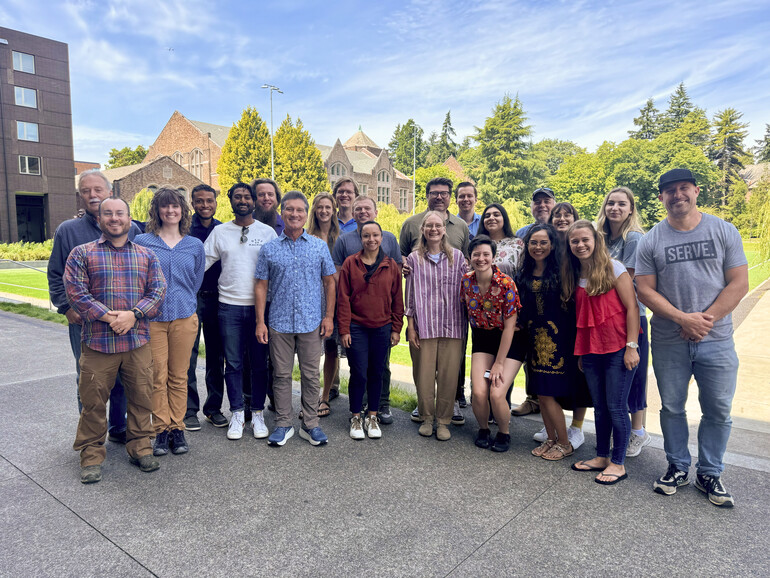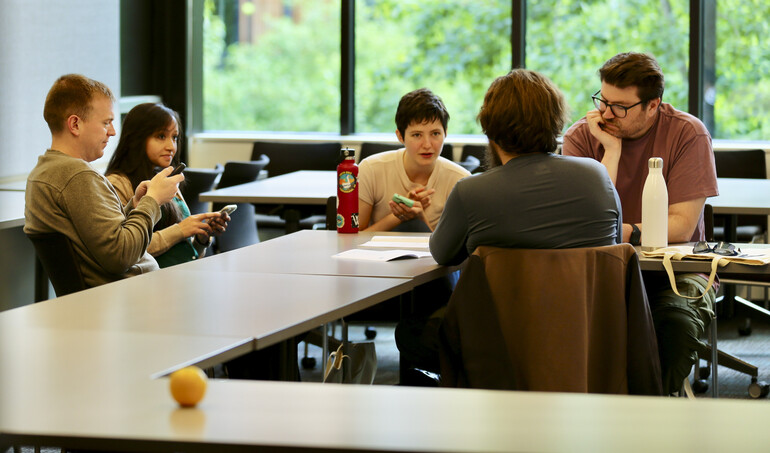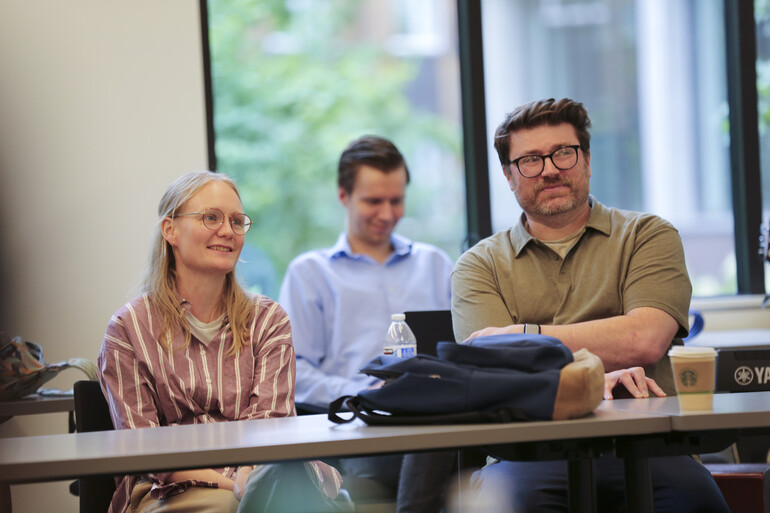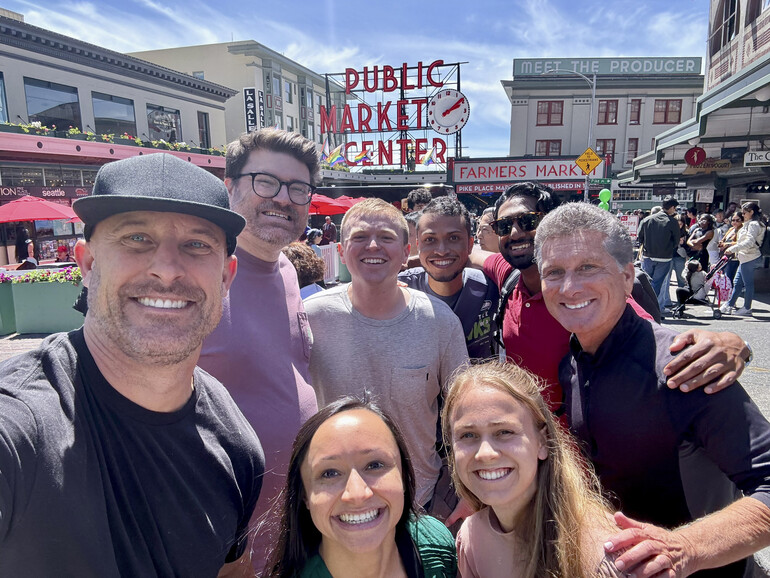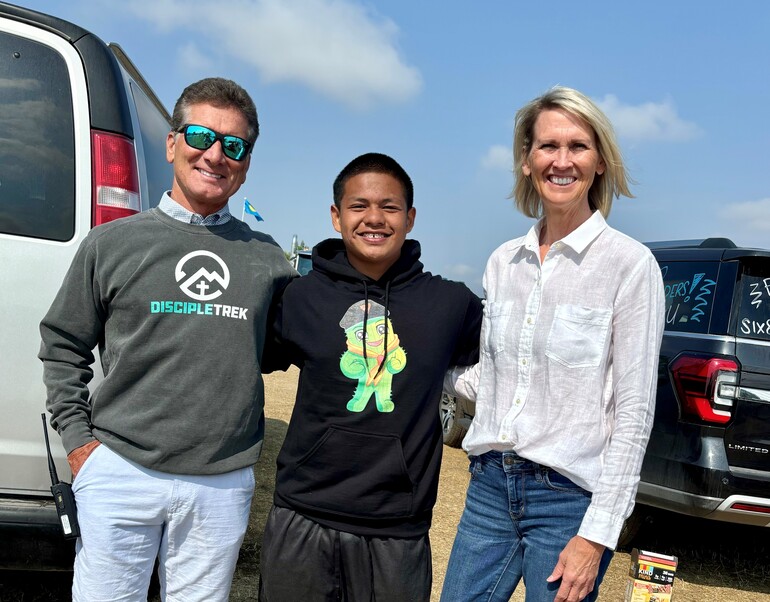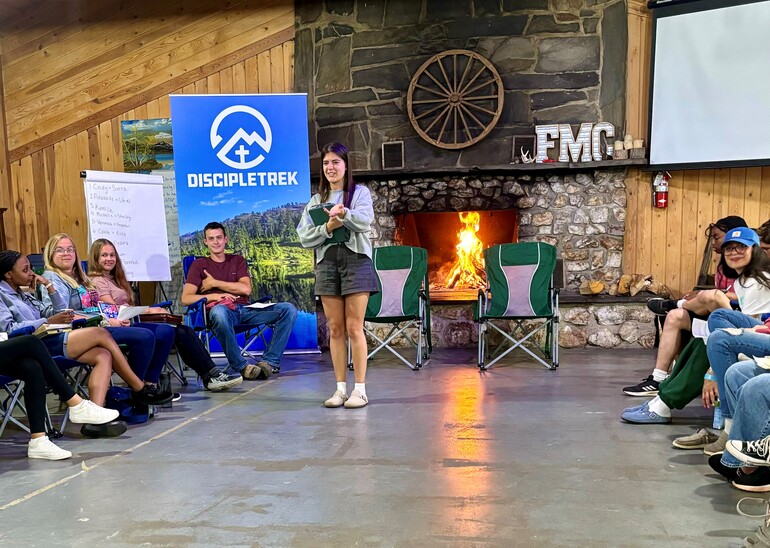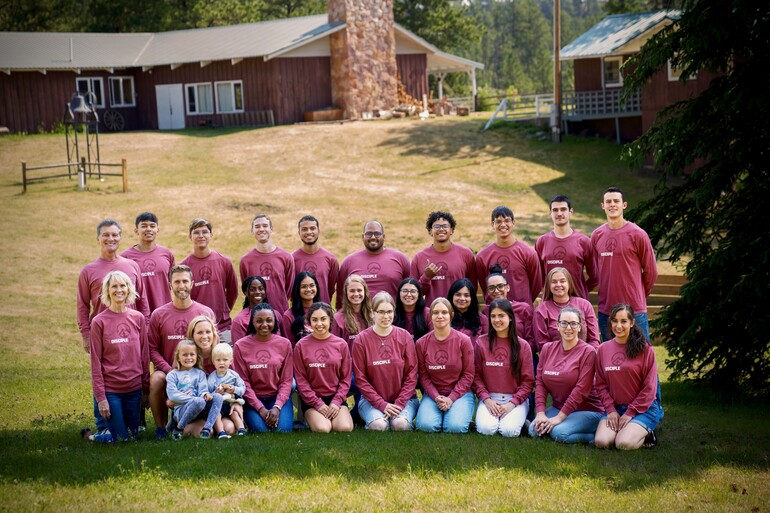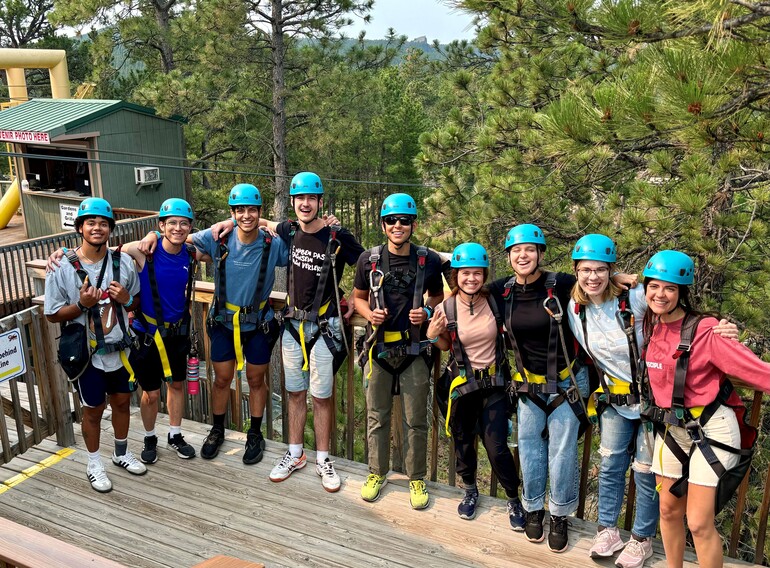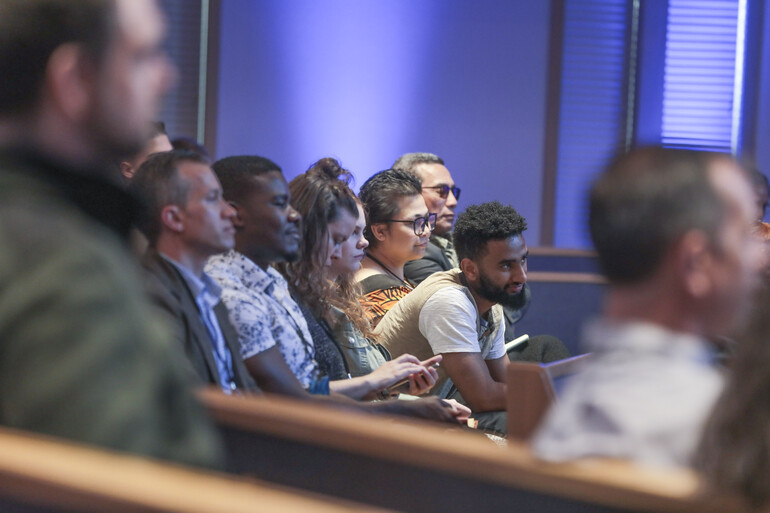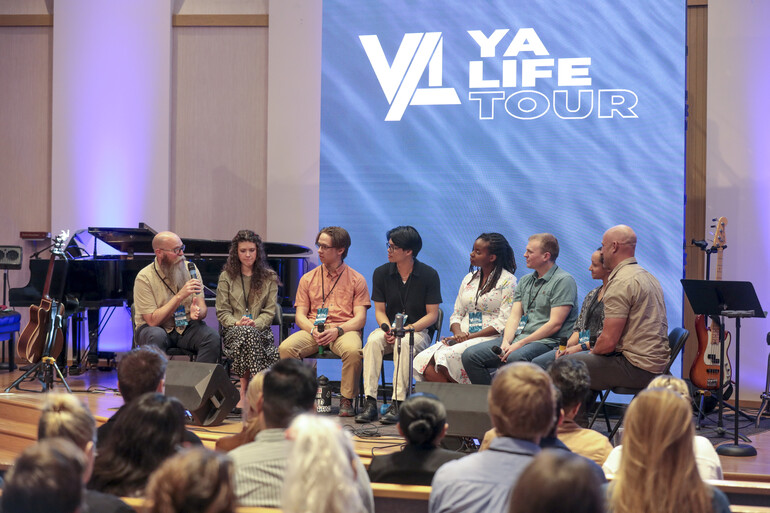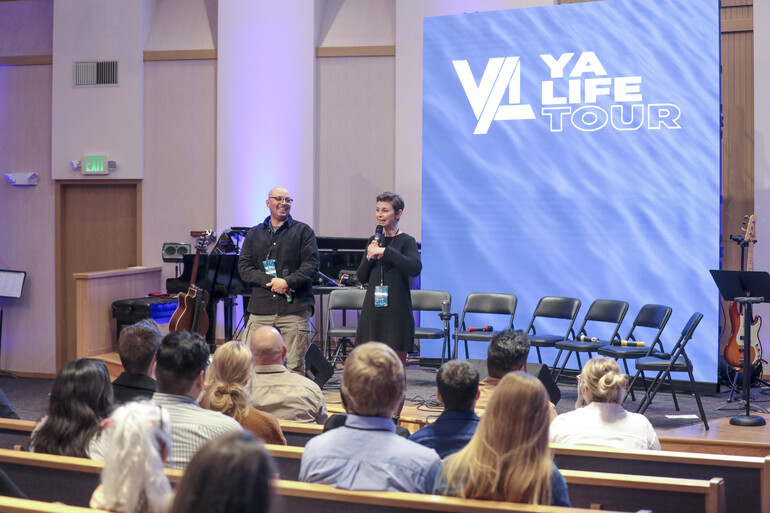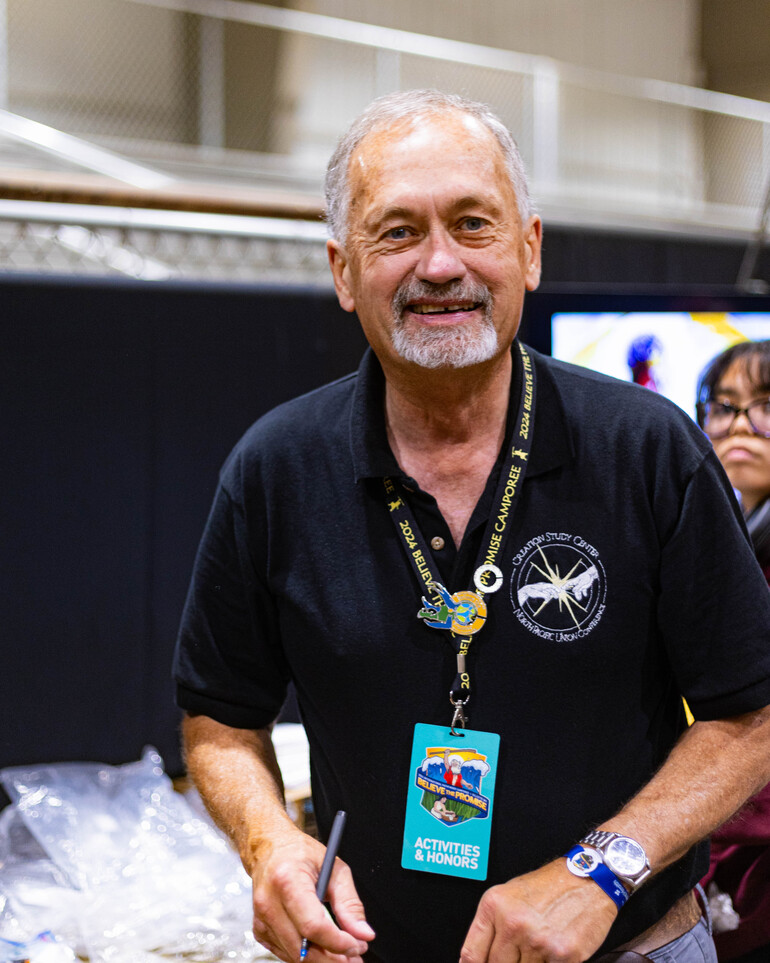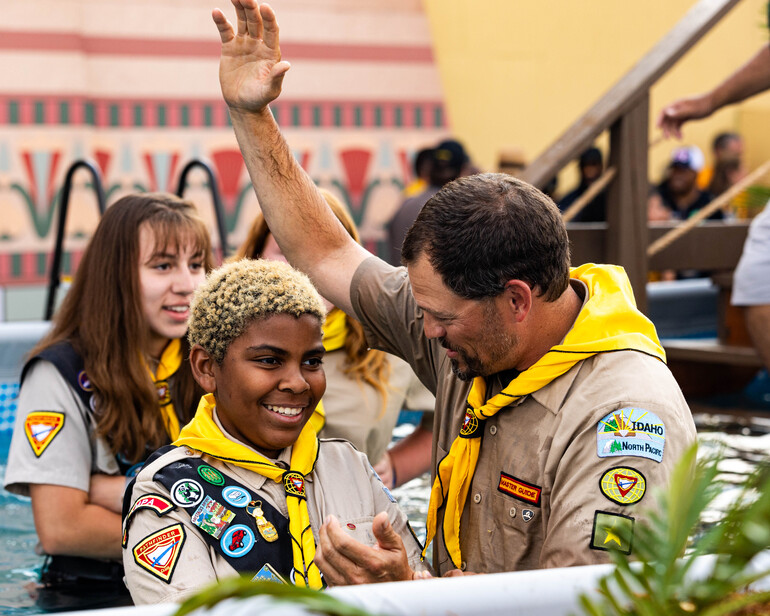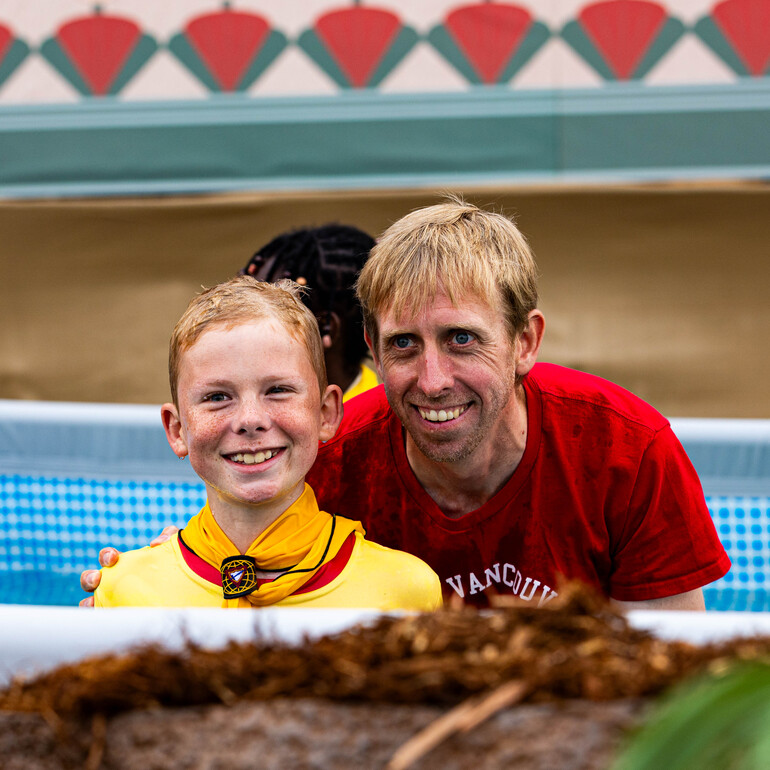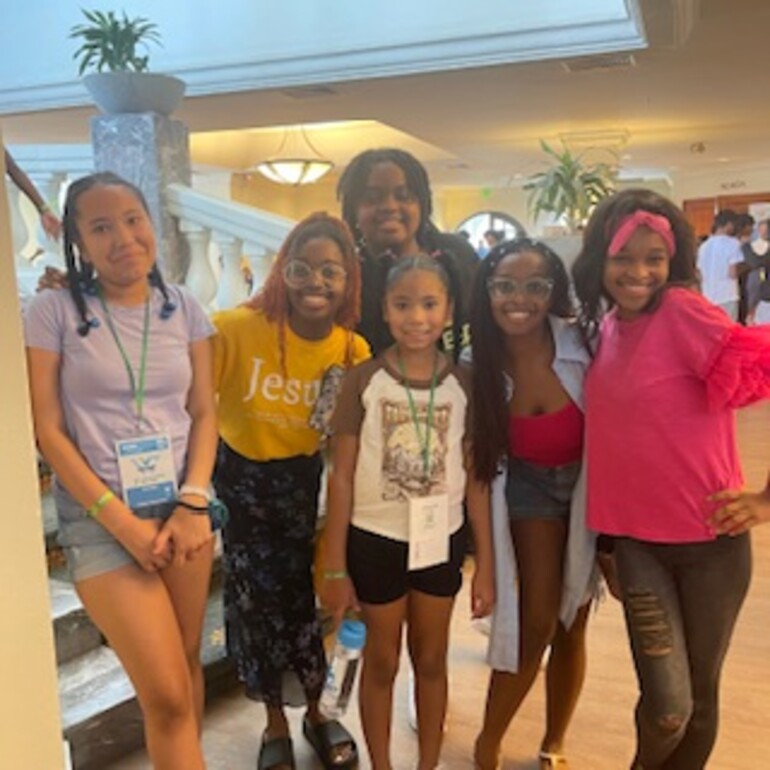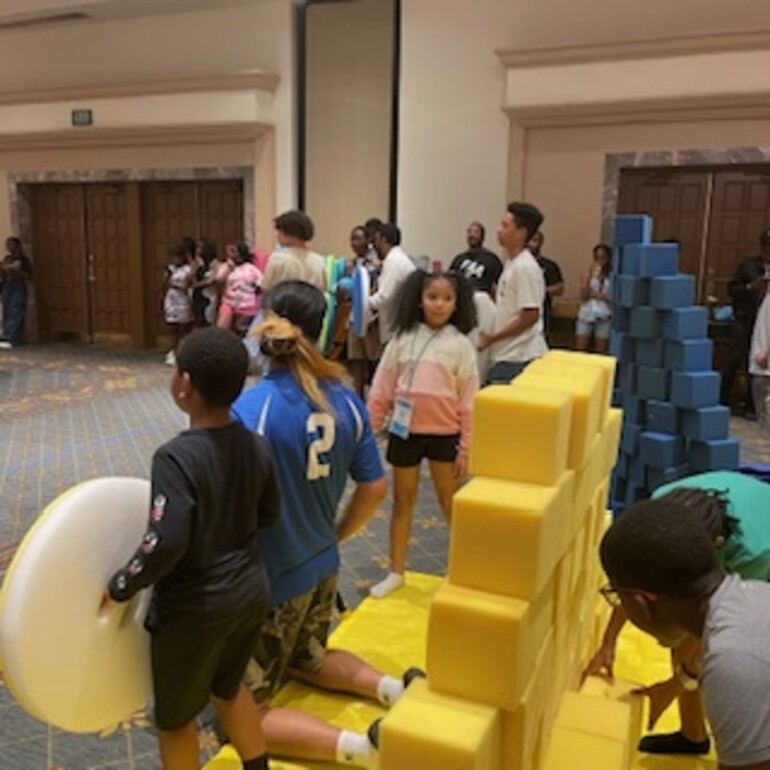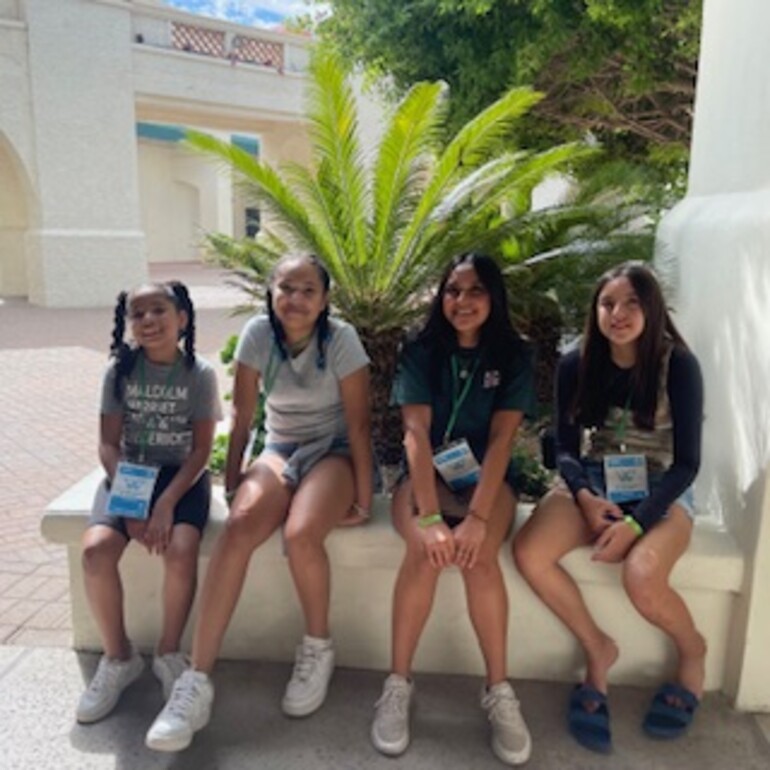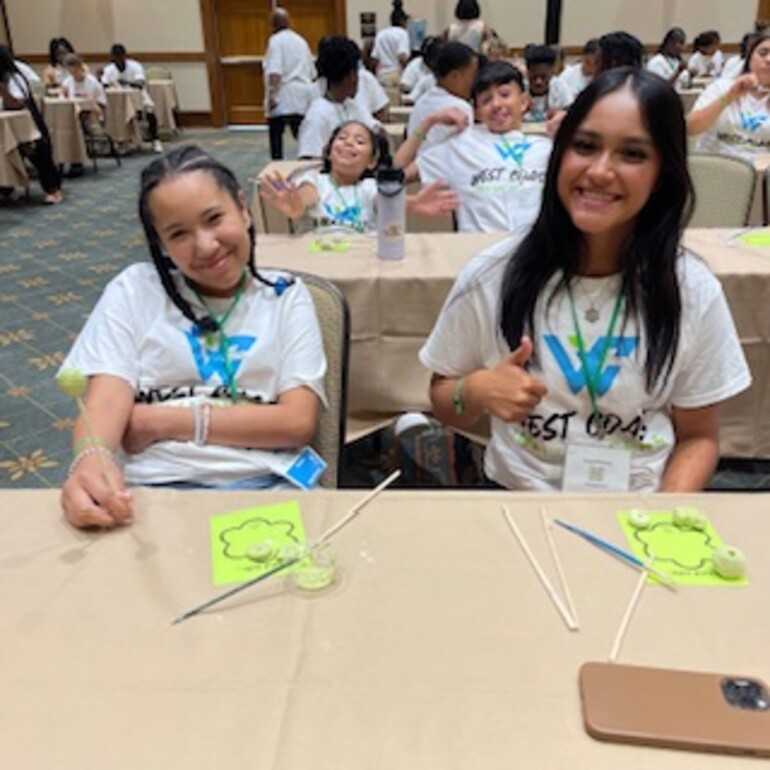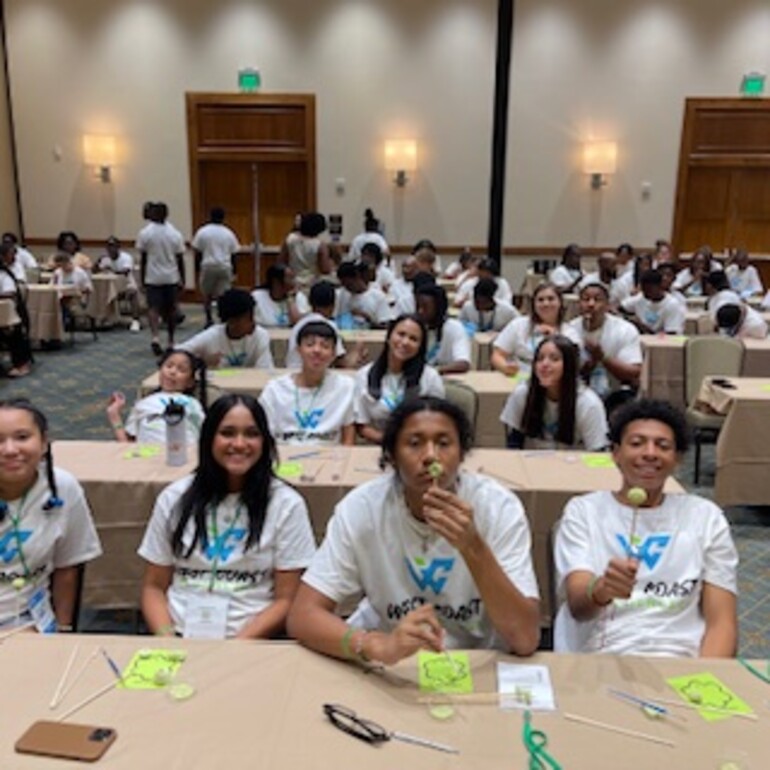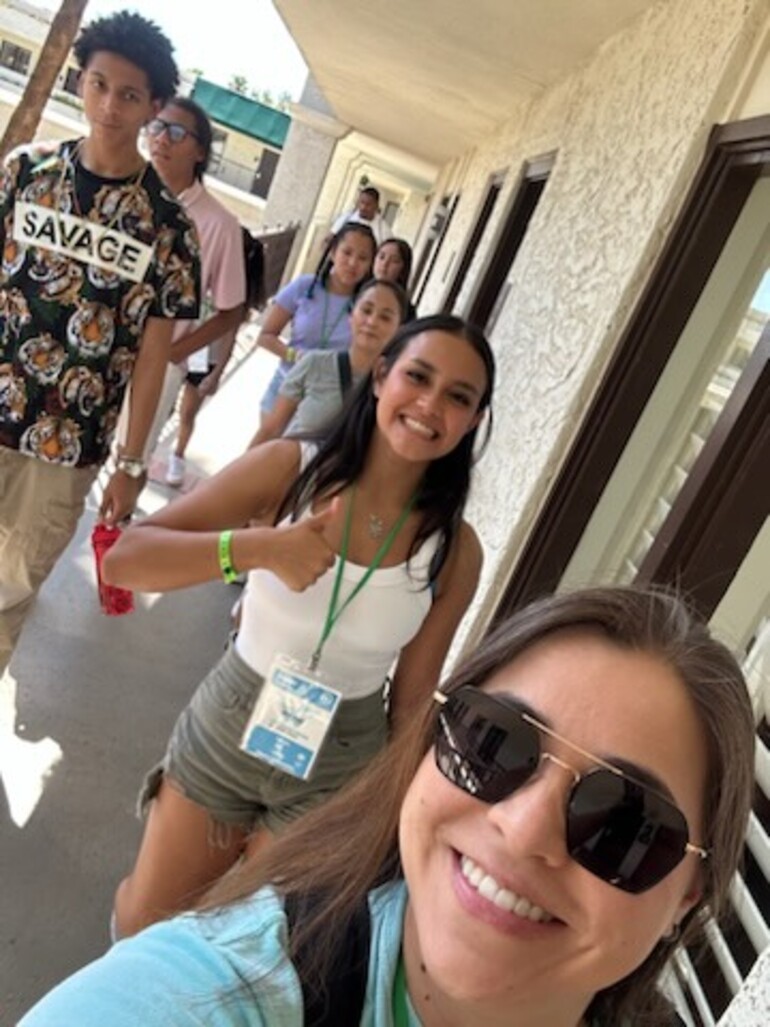In the heart of every vibrant church is a village of faith — a community where connections across generations breathe life into our shared spiritual journey. Faith isn’t just taught; it’s caught and lived out through dynamic relationships that invite each person, of each generation, to join the journey.
Beloved youth ministries across the Adventist Church have made a monumental impact by nurturing hearts and shaping young minds through the years. However, when the focus becomes too program-centric, the relational aspect can diminish in its effectiveness.
Recognizing this, North Pacific Union administrators, leaders and pastors continue to advocate for a vital shift back to deeper connections, championing the "Growing Together" initiative — a commitment to authenticity and intentionality that seeks to address the emerging needs of young people.
This approach focuses not on creating new programs but on revitalizing the relational aspects of ministry. The Growing Together Cohort for church revitalization exemplifies this effort, focusing on collaborative engagement that ensures faith is experienced relationally in the context of real life.
In this village of faith, every voice matters and every generation plays a crucial role in strengthening our spiritual community.
Two leading figures in this effort here in the Pacific Northwest are Rob Lang, NPUC youth and young adult ministries director, and Benjamin Lundquist, Oregon Conference young adult ministries director. They work with a broad network of pastors, youth and young adult leaders, and advocates for generational engagement to address the pressing needs for relational connections.
"As a denomination, we’ve made intentional investments in programs for our young people because we recognize that if we fail to pass on our faith to the next generation, we risk losing our relevance,” Lang said. “While we've been diligent in creating programs — perhaps more so than any other denomination — it’s important to acknowledge that programs have limitations. Ultimately, it's the relationships formed within these programs that truly make a difference."
“It takes a village to raise a child” is a common phrase in the American lexicon. This is particularly true in the Adventist Church, where the entire body of Christ, with its variety of gifts and abilities, is essential in nurturing faith.
1 Cor. 12 elaborates on the diversity of gifts, differences of ministries and variety of activities that enhance God’s village of believers. Paul acknowledged, “But now indeed there are many members, yet one body.”
“I love talking with parents and grandparents,” Lundquist shared. “Their heartbeat is for Adventism to be sustainable until Christ comes. They want to make a lasting impact, leave a legacy that endures beyond their lifetime and ensure that as they age, they remain relevant. Engaging deeply with students, young adults and young professionals helps the next generation step into their gospel identity, understand their giftedness and live out their purpose.”
Value of Voices
During this summer’s DiscipleTrek — a three-week intensive training course offered by NPUC for college students who want to share their faith at their public or private university — Lang once again observed: Young people value the voice of experience.
“They want to know how individuals navigated the crossroads and challenges in their life and how faith and church remain relevant,” Lang noted. “You, as an older member, have a valid voice.”
Florence Phillips, a medical student who participated in DiscipleTrek, affirmed this: “The investment of time and relational connection has meant so much to me at this point in my life. I am beyond grateful!”
The importance of this “village of voices” becomes especially evident during adolescence.
“When someone gets to adolescence, they're looking for other voices to either confirm or disprove their parents’ theories, their parents’ faith or their own question marks. They need other voices speaking into their lives,” Lang explained. “Whether you have a church title or not, each adult has a prime opportunity to connect with, influence and encourage the younger generation through personal interaction.”
Further he added, “Adults need to hear the fresh faith developing in young people because this, in turn, nurtures their faith. There is a mutually validating experience as our ears and our voices engage one with another.”
This last year held an interesting mix of one-on-one connections, small-scale events and an extra large event with the International Pathfinder Camporee in Gillette, Wyoming.
One of the many meaningful stories that emerged from the camporee involved a young man from Palau — a ministry territory associated with NPUC.
Most of the Pathfinders from Palau come from non-Adventist families who appreciate the values-based education associated with the Adventist school system and Pathfinder clubs. This young fellow listened to the personal stories of faith shared by adult mentors and Damien Chandler, the camporee evening speaker, and knew in his heart that he wanted to be a Christ follower, too.
In the pouring rain, when most people had gone to seek shelter, the young fellow stepped forward to respond to a call to be baptized — the first in his family. Because of how adult mentors spoke into his life, he is now excited about sharing his new-found faith with his family and friends.
Whether with personal interactions or group activities, Lang underscored a crucial point: “Never underestimate the power of the gospel and the power of your voice to share what the gospel has meant to you.”
Reality Check
Denominations often experiment with various “secret sauce” recipes for youth ministry and faith transfer, each presenting their approach as the ultimate solution. However, the true essence of effective youth ministry lies in the relationships and core values that shape personal interactions, ministry development and program offerings.
Adventism’s emphasis on volunteer-led ministries and lay engagement stands out compared to other denominations.
“Baptists, for example, have a much higher percentage of youth pastors,” Lang said. “They don’t have as many lay engagement opportunities as we do for lay people to be involved in the sharing of faith with their children.”
“Mormons, obviously, do an excellent job at building Mormons, especially with their two-year mission program,” Lundquist noted. “Then there are non-denominational churches that are standalone. It’s sink or swim because it’s only you.”
“The beauty — and the challenge — of the Adventist Church,” Lundquist continued, “is that we have sustainability power in our history and a global network of 20 million Adventists and growing. I think there's a challenge in our long history in that we sometimes cannot be as open to innovation because our history is so long and deep.”
Lundquist and Lang both noted that youth ministry leaders and researchers from Fuller Youth Institute and Barna admire the Adventist legacy of being founded by young people and wonder why these roots are not more actively leveraged today.
“We’ve put a lot of resources into programs as if the program itself is the vehicle,” Lang acknowledged. “Programs are simply an opportunity for relationship. Too many parents and grandparents seem to think that, if they just send their children to an Adventist school or enroll them in Pathfinders, their job is done because the ‘professionals’ are leading the way in faith development.”
There’s a reality check here. Lang said, “Parents, or even grandparents, may discount their voice and their experience. They often lack the confidence to share life and faith insights firsthand, in real life, with their children,” Lang said. “We each have a calling and responsibility to foster our faith in genuine, relational connections with our children, grandchildren and young people at church.”
“The heartbeat of the Growing Together Cohort and our pathway forward needs to be a revisioning of each generation's greatest contribution to Adventism based on their age demographic,” Lundquist said. “We need the seasoned, resourced and positioned older generation to understand that their greatest contribution to Adventism is in the reaching, loving and empowering of the next generation.”
Building Authentic Connections
While the vision of intergenerational ministry is clear — empowering the next generation through meaningful connections — the question remains: How can these relationships be intentionally nurtured in everyday church life?
Building authentic connections isn’t just about structured programs; it’s about embracing everyday opportunities to relationally engage, mentor and grow together in faith. These acts of connection can range from simple gestures to profound, involved efforts.
Examples from the past show that simple, intentional gestures can have a significant impact. A few years ago when North American Division championed a comparative research study with Barna, one of the notable stories that emerged involved two elderly sisters who “adopted” some young girls at their church.
The elderly women chose to delay their annual trip to Florida to attend the church Christmas pageant where the girls performed. This act of love left a lasting impression on the young girls, who cherished the time and attention given by these older sisters.
Similarly, one Northwest education leader shared recently how he engaged in conversation and expressed interest in the life of a contractor whose children were highly involved in a 4-H club. His willingness to engage and curiosity to learn more opened the door for a meaningful connection.
When the leader mentioned that the Adventist Church has a similar program called Pathfinders, the contractor’s eyes lit up. “I know about Adventists!” he exclaimed. “I went to an Adventist summer camp, and it was one of the greatest experiences of my life.”
In another example, a pastor felt compelled during a sermon to appeal for someone in the congregation to fund a young person's college education. Within 40 minutes, a couple responded and fully funded a four-year education for a young man in need. Each of the authentic connections started with curiosity, goodwill and a willingness to listen well.
In various congregations, seasoned leaders have stepped up to build authentic connections through gestures like providing cars, vehicle maintenance, a weekly gathering spot for a hot meal and conversation, financial coaching, resource networking and simple gestures of friendship.
Auditing Your Connections
“What are you going to do individually? What can your community do practically to support the next generation?” Lundquist asked. “There are basic things you can do that create a sense of welcome and connection. It’s about showing them that they are seen, heard and valued.”
Leaders like Lundquist and Lang emphasize that the key to quality relational connections lies in intentionality and presence. It’s about recognizing those everyday moments that can be transformative.
“This is a call to action on an individual level,” Lundquist urged. “It’s not about building a new program but about partnering with God to support young people practically. If you plan to pray for them, be prepared to help them.”
To start, consider auditing your connections and calendar:
Identify key young people: Who are the young people in your life? What challenges are they facing?
Evaluate your engagement: Where do young people show up on your calendar? How can you invest time and attention in the next 90 days?
Start small: Begin with small, intentional actions. Show up, listen and create space for their stories and struggles.
Share your story: As you build relationships, begin to share your personal faith experiences. It’s about being authentic and open about your journey, not having all the answers.
Create opportunities: Invite young people to participate in projects or provide input in church activities. It’s about giving them a voice and a place.
As you take a look at your audit results, you may see progress or room for growth. That's the beauty of a village of faith — the opportunity to grow together.
For a broader impact, consider joining the Growing Together Cohort in spring 2025. This nine-month journey offers practical steps to foster intergenerational connections and revitalization in your church. Sign up at growingtogethercohort.com.
“This Growing Together Cohort will help your church become a place for all generations,” Lang said. “In a world that seeks to divide, this approach keeps us together in ways Christ knew we would need in the last days.”





